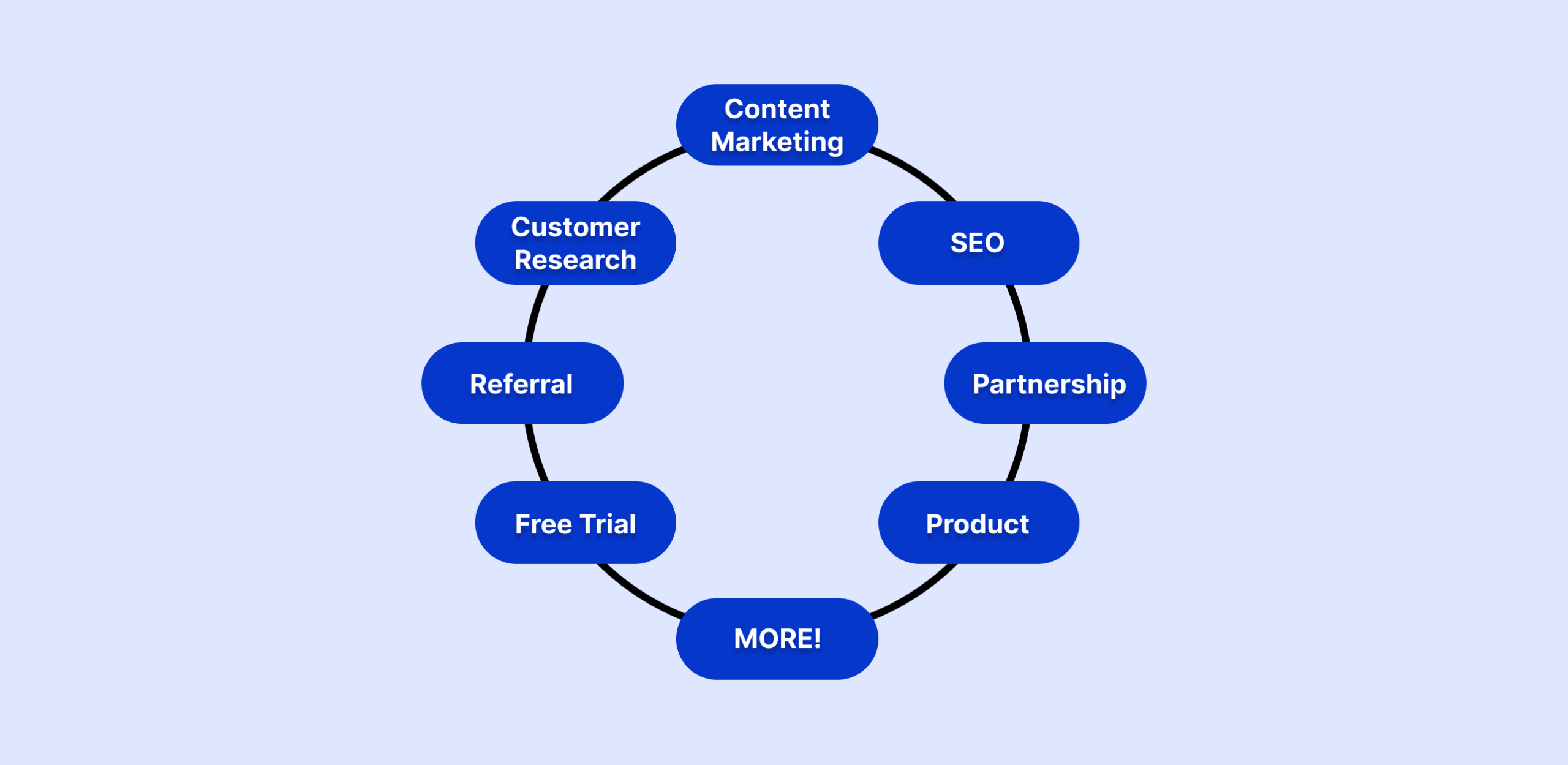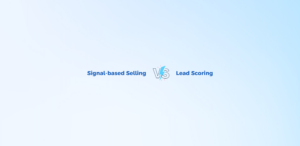Ads, webinars, podcasts, LinkedIn posts, and so on… How did you come across your favorite SaaS tool?
Do you remember when you started using YouTube, Gmail, or Instagram?
One day, those SaaS tools just slipped into our lives and never left. But they also opened up so many opportunities for all other companies to reach their desired audience.
Hoping that you do know your ideal audience.
Today, I am going to walk you from the a to the z of how to establish your own SaaS marketing strategy to see the best results in a short amount of time.
Let’s begin with:
TL;DR
- SaaS Marketing is the process of promoting and selling these cloud-based software applications.
- Since most SaaS tools have very niche solutions, finding people who need that solution can be tricky. That’s why SaaS marketing has to be different from traditional marketing.
- You can reach peak marketing efficiency in SaaS by just following 12 steps:
- Get to know your ideal customer and create user personas,
- Do a thorough research about your competitors and their user bases,
- Create blog posts to attract high-quality leads,
- Create landing pages with visible CTAs to direct users to your tool,
- Create videos as well for accessibility and different learning types,
- Host webinars and start a podcast to portray yourself as a thought leader,
- Optimize for search engines with on-page SEO,
- Get backlinks, write guest posts, and engage in forums for off-page SEO,
- Get help from thought leaders and do influencer marketing,
- Create affiliate relationships with non-competing brands,
- Have a free version of your tool,
- And create a working referral program with incentives.
What is SaaS Marketing?
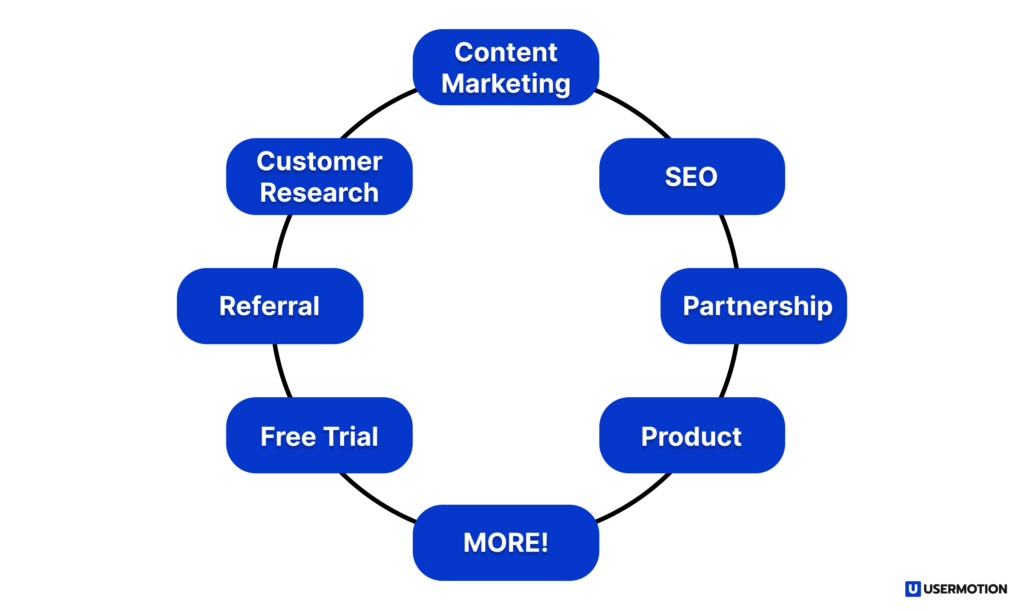
SaaS, which stands for Software as a Service, is a cloud-based service where instead of downloading software on your desktop PC or business network to run and update, you instead use an application over the internet.
SaaS Marketing is the process of raising awareness for, promoting, and selling these cloud-based software applications.
How is SaaS Marketing Different from Traditional Marketing?
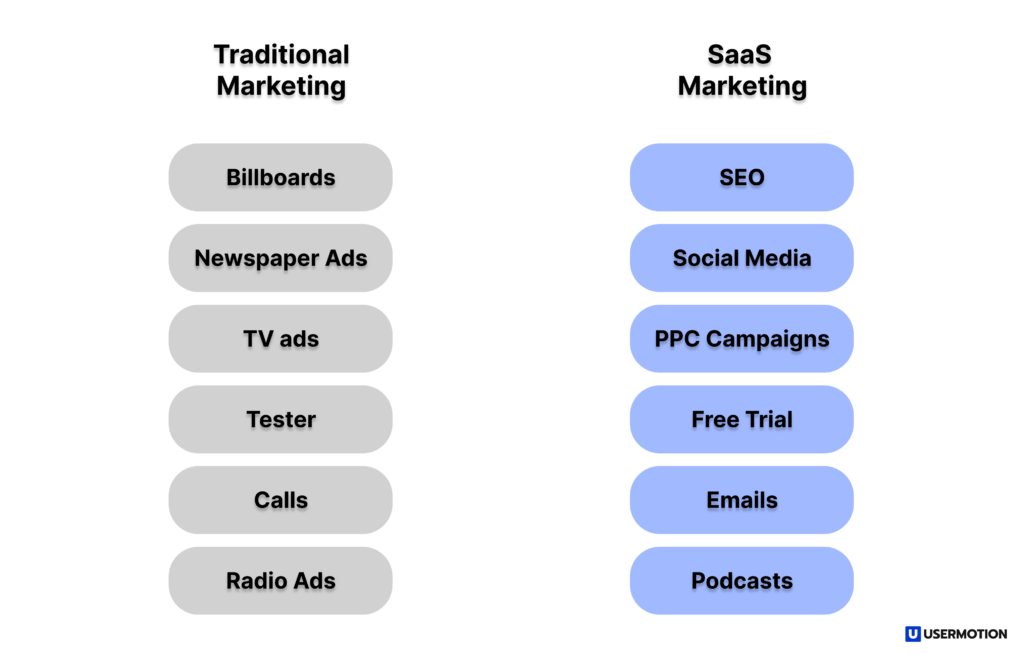
The nature of the SaaS model naturally brings challenges and opportunities that require specialized marketing strategies. The focus isn’t just on the initial sale but also on retaining customers long-term, ensuring they see continuous value from the product.
Additionally, since SaaS products are digital and often serve to solve specific business challenges, the sales cycle might be longer, involving multiple decision-makers and a need for comprehensive education throughout the buying journey.
Complex buyer journey
In essence, SaaS marketing isn’t just about selling a software solution. It’s about promoting continuous value, fostering relationships, and ensuring that as the software evolves, its user base remains engaged, satisfied, and growing.
Unlike going on a website and purchasing an item, SaaS businesses sell a value that will show itself in time. Thus, the marketing strategy should focus on how that value is the best out there rather than showing what the product is.
But this brings another problem.
Tight competition
‘There aren’t as many SaaS areas as there are e-commerce items, and you are limited with a singular function that you excel at. It is highly likely that there are other companies that do almost the exact same thing you do for a very similar price.
SaaS marketing should not only focus on how valuable your solution is but should also convey the message that your solution is better than all the other competitors.
So how should you build your SaaS marketing strategy?
Here are 12 steps and tactics for you to get to as many people as you can:
Step 1: Customer Research
The first step in the SaaS marketing strategy is customer research. Customer research consists of 2 steps within itself:
- Figuring out your ideal customer persona,
- And understanding your competitors, their customers, and their strategies.
1. Know Your Ideal Customer Profile
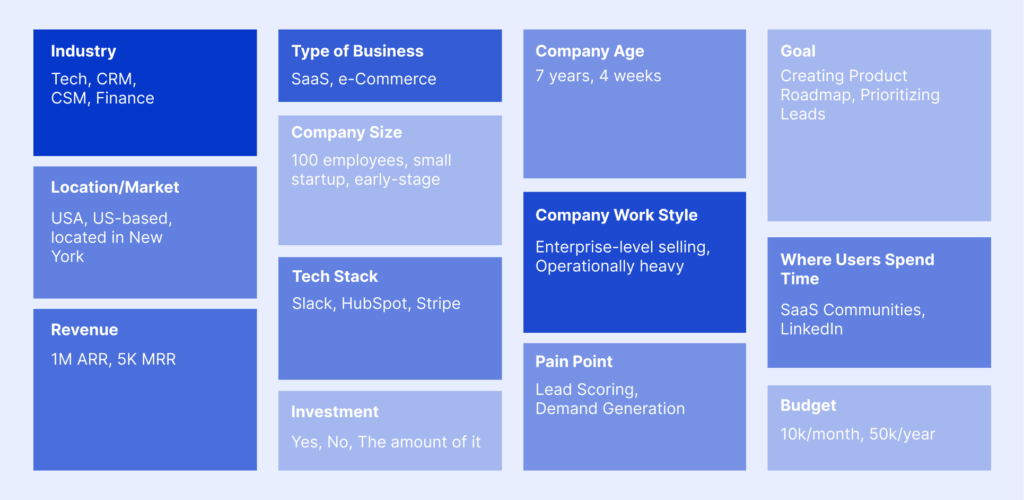
Think of your ideal customer profile as a sketch of your “dream user.” It’s like drawing a character for a story, but instead of a fantasy tale, it’s for your marketing strategy.
- Getting Personal: By crafting a detailed persona, you’re diving into the pieces of who your ideal user is. What’s their job role? How tech-savvy are they? What challenges do they face daily? This helps in tailoring your product and marketing messages to resonate deeply with them.
- Guided Product Features: Knowing what your ideal customer values can guide your product development. If you know they value quick and easy integrations, for instance, you can focus on that.
- Tailored Content: With a solid persona, your blogs, emails, ads, everything speaks directly to that ‘dream user’. It’s like you’re having a one-on-one chat with them, even when you’re broadcasting to thousands.
Use PLG CRM solutions like UserMotion to analyze your ideal customer profile, based on your entire customer data, and focus on customers with the highest potential to grow your revenue.
How it works:
- Integrate your customer data tools (like, HubSpot or Intercom)
- Connect your payment provider (like Stripe)
- Start working on your champion customers!
You’ll see lists and dashboards like this, analyze all the attributes and actions a champion customer has, and work on your ideal customer profile and the ones with the highest fit.
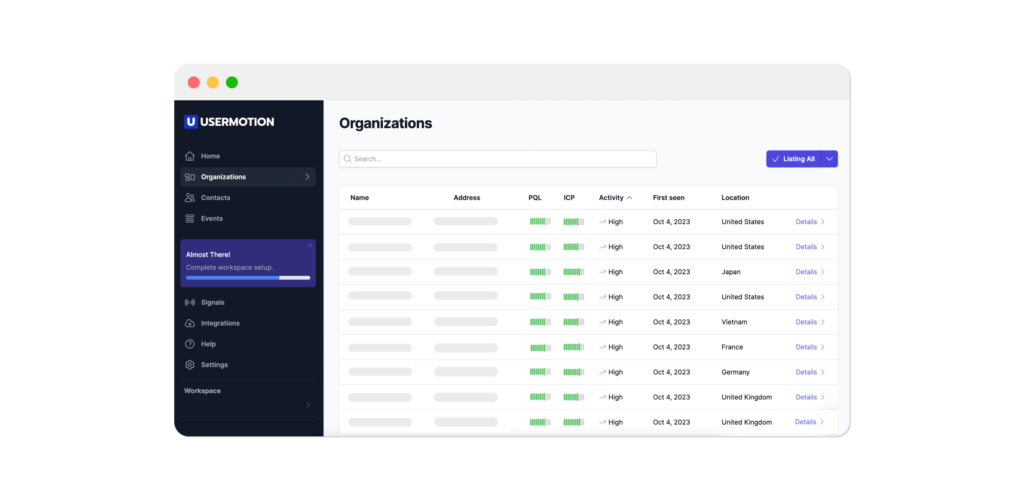
See our step-by-step guide to identify your ideal customer profile with strategies, examples, templates, and insights from SaaS owners!
2. Understand Your Competition
Marketers say that conducting competitor analyses is one of the most helpful content marketing tactics.
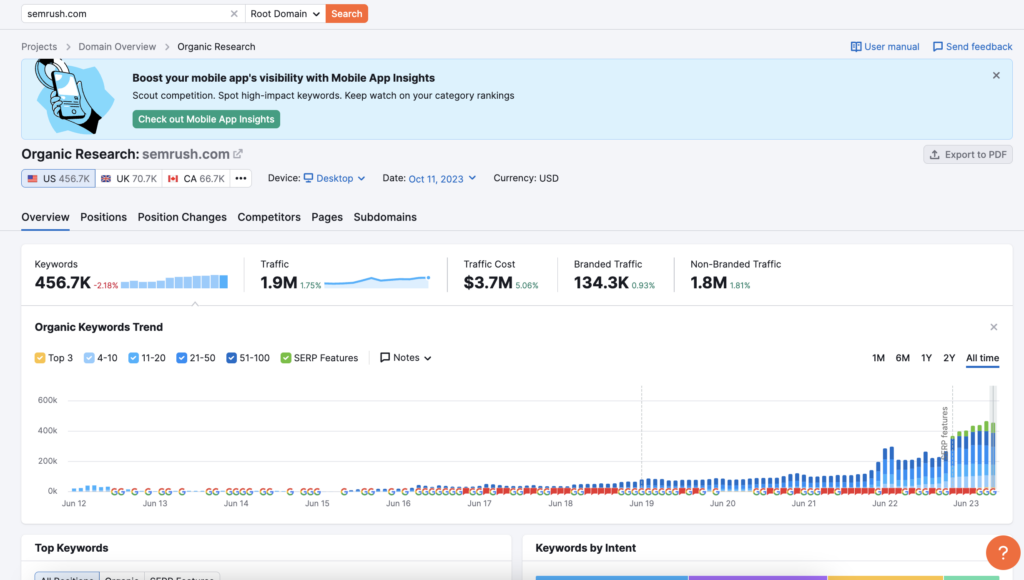
Competitor research in SaaS marketing is like spying on your school’s top student to figure out how to ace the test. Except, it’s all legit and super smart to do.
- Feature Face-off: By comparing features, you can find out where your software shines and where it might need a boost. Maybe your competitor’s software has an integration you never thought of, or perhaps yours has a unique feature they haven’t tapped into. Knowledge is power!
- Pricing Play: Checking out how competitors price their software can give insights into market expectations. Are they offering cheaper plans with fewer features? Or are they all-in on premium packages? This can guide your pricing strategy.
- Marketing Insights: Notice your competitor’s ads everywhere? Or maybe they’re hosting tons of webinars? Watching their marketing moves can inspire your own strategies (or tell you what to avoid).
In the end, SaaS marketing is like a game of chess. By understanding your ideal player (customer persona) and keeping an eye on your opponent’s moves (competitor research), you can make smarter plays and ultimately win the game!
Step 2: Content Marketing
Let’s keep it going from the school example. Competitor research is like legal cheating, and in this case, content marketing is just like getting creative to impress all teachers for giving you a higher score, or filling up your portfolio to impress the college you want to get into.
In that case, you need essays, but only essays aren’t enough.
You also have your audio and visual content.
3. Blogs
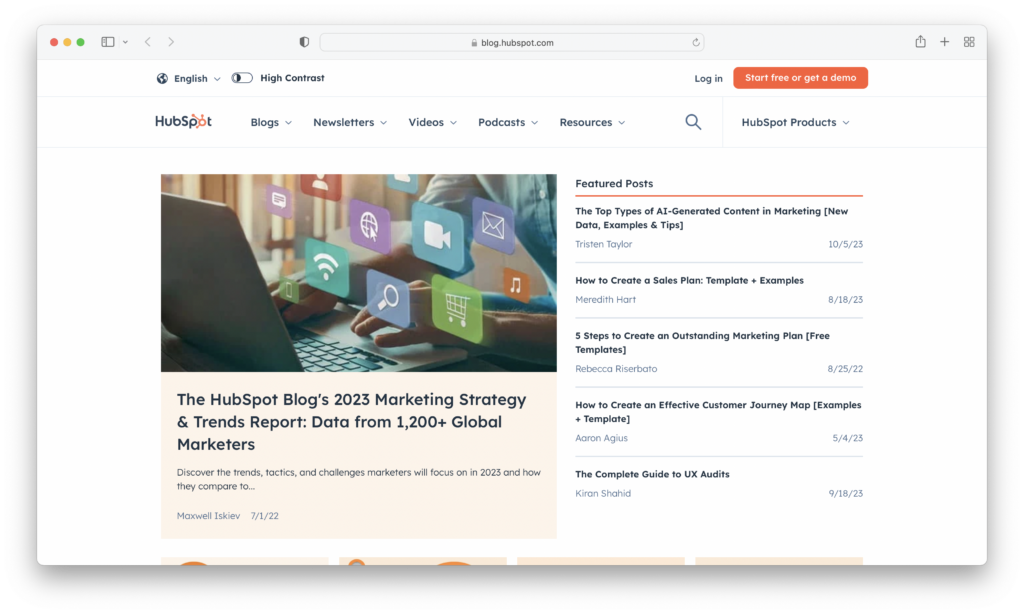
Around 90% of SaaS businesses use blog posts as part of their online marketing strategy, and this is a reason.
Since most SaaS tools have very niche solutions, finding people who need that solution can be tricky.
Blogs allow those people to find you organically instead.
By creating blog posts about topics your customers need/want to know and showing them how to solve that problem with your solution, you can create awareness of your product and attract the exact leads that are high value and likely to buy.
4. Landing Pages
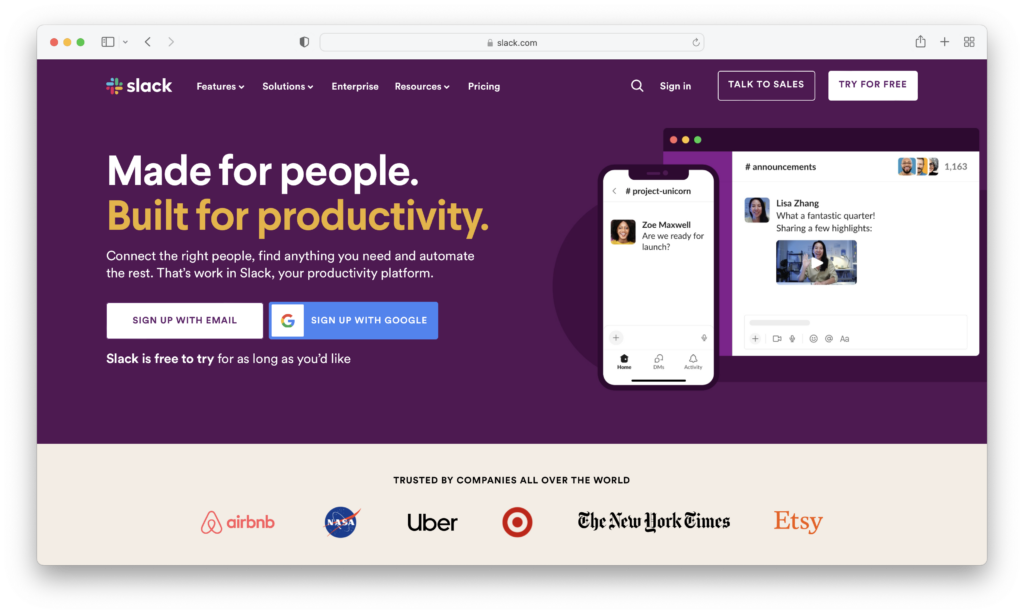
Landing pages have a similar benefit as blog posts, but the landing pages focus directly on your solution rather than only mentioning it.
Another factor that separates landing pages from blogs is the CTAs. With clear CTAs (Call-to-Actions), landing pages can up the game in converting visitors into trial users, subscribers, or even paying customers.
5. Videos
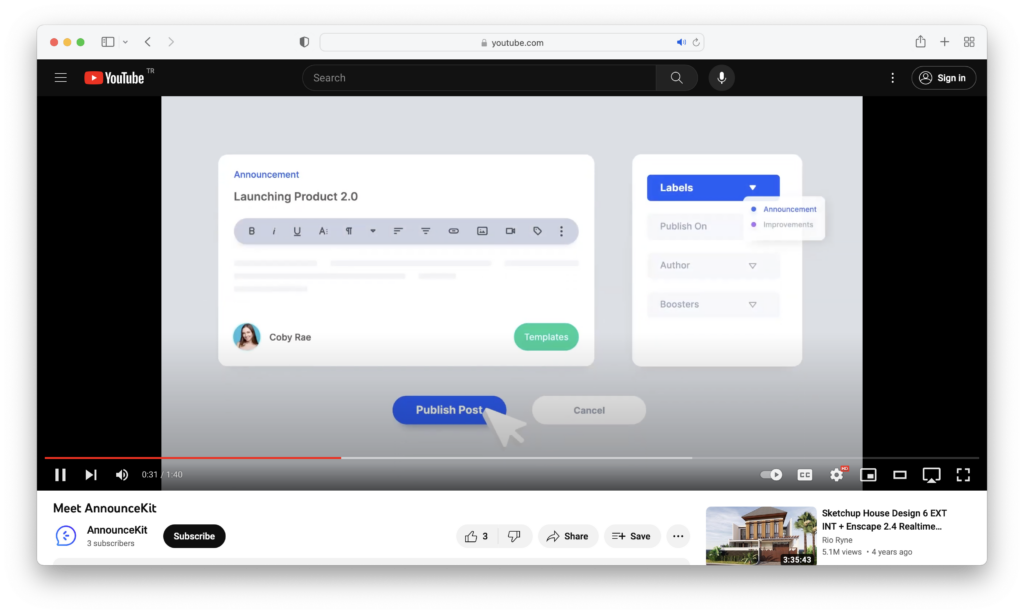
Videos are the charismatic cousin of the content family—everyone loves them.
Many people are visual learners. A slick demo video can quickly showcase your software’s benefits and how to use it, making the onboarding process a breeze.
Videos can also captivate users, keeping them on your site longer. Plus, they’re shareable, increasing the chance of virality.
6. Podcasts and Webinars
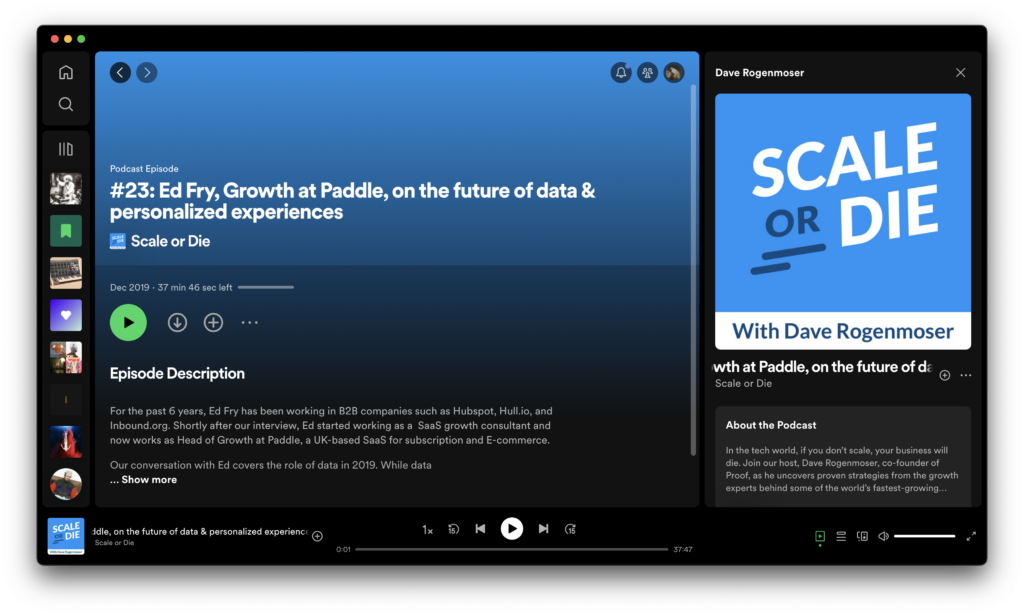
SaaS can be complex. Webinars and podcasts allow you to go deep into features and benefits, answer questions, and showcase the software in real time.
Hosting a webinar or having a podcast also positions your brand as a thought leader. You’re not just selling; you’re educating and building trust.
That’s why 93.5% of SaaS companies offer educational webinars. (Demio)
Step 3: Search Engine Optimization (SEO)
53.3% of total website traffic comes from organic search.
7. On-Page SEO
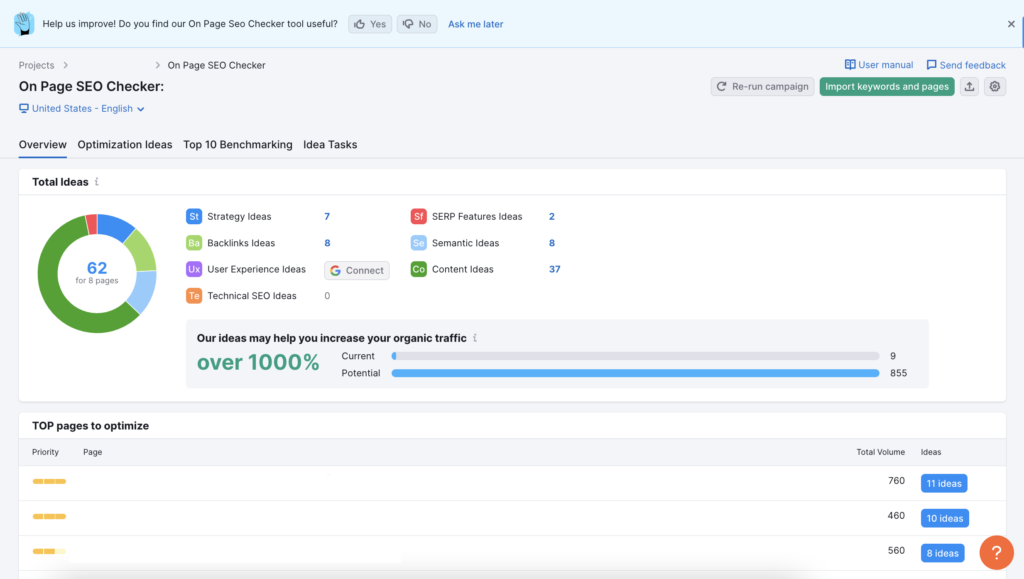
On-page SEO is like the foundation of your digital house. It’s what makes sure the right people can find you in the massive city that is the internet.
If you’re not optimized for relevant keywords, you’re like a hipster coffee shop hidden in an alley—cool but hard to find.
Proper on-page SEO ensures that visitors find what they’re looking for quickly, reducing bounce rates and increasing the chance they’ll stick around.
So level up your keywords game, get some visuals in your blog and put descriptions on them, write those headlines as if they were your last chance to survive, and leave plenty of blank space. Just in case.
But, it doesn’t end there:
8. Off-Page SEO
Off-page SEO is like your reputation in high school; it matters and people talk. It’s all about building a good reputation for your website on the vast web.
Good Practices for Off-page SEO:
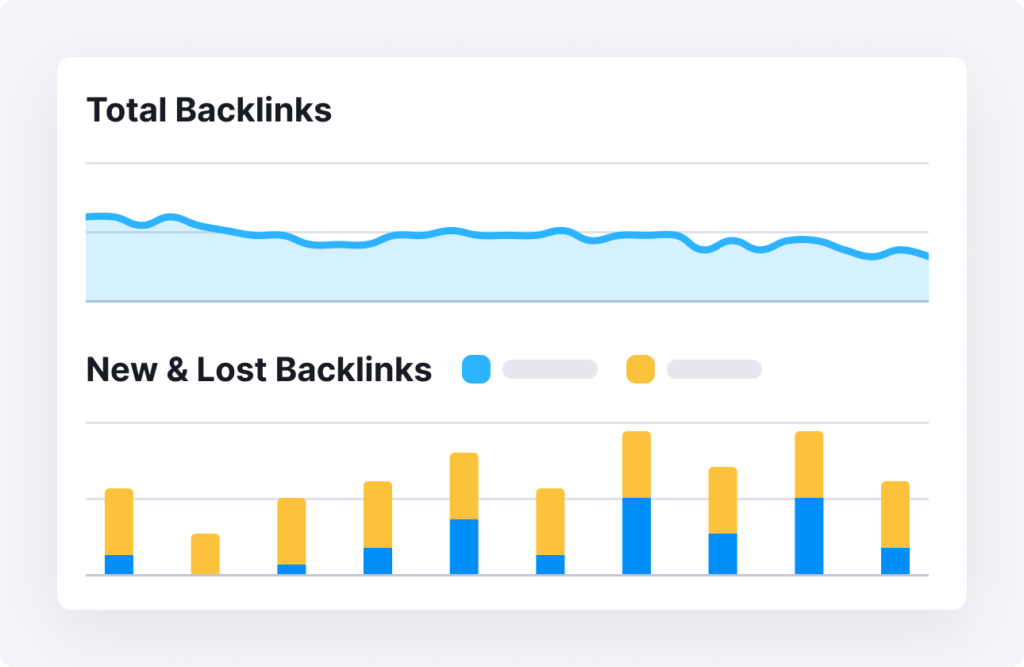
Quality Backlinks: Aim for backlinks from high-authority sites. In fact, backlinks are among the top three ranking factors. It’s better to have ten links from reputable sources than a hundred from shady corners of the web. Think of it as getting endorsements from celebs rather than random folks on the street.
Guest Posting: Write high-quality content for reputable websites in your industry. It’s a win-win! They get fresh content, and you get exposure plus a backlink. Just ensure the content is genuine and not overly promotional.
Engage in Forums & Communities: Platforms like Quora, Reddit, or industry-specific forums can be gold mines. Answer questions, and provide valuable insights, and naturally, people will want to check out your site.
Social Media Engagement: While the direct SEO benefits of social signals (likes, shares, etc.) are still a topic of debate, there’s no denying that increased visibility on platforms like Twitter, LinkedIn, or Facebook drives traffic.
Step 4: Partnerships
9. Influencer Marketing
Influencer marketing is like having the popular kid in school wear the sneakers you’re selling. Suddenly, everyone wants a pair.
People trust recommendations from the personalities they follow. A nod from a relevant influencer can be more effective than traditional advertising. For B2B marketing, this could be a well-known thought leader. For B2C, this could potentially be any famous person.
10. Affiliate Marketing
Affiliate partnerships are like your buddies vouching for you at a party. They tell folks how great you are, and in return, they get a slice of the pie (or commission) for any business they bring in.
It is very cost-effective. You typically pay for results, i.e., actual sales or leads. This means you’re not shelling out without seeing returns.
Step 5: Product
11- Free Trial or Freemium?
Not everyone is going to love your marketing and your promises so much that they are going to accept to pay without experiencing it.
That’s why free trials and freemiums exist.
Potential users can evaluate the product without any financial commitment, reducing the perceived risk of trying something new.
Also, by offering a part of your product for free, you can enlarge your user base more quickly, and gather feedback from a wider part of potential customers.
But which free strategy suits your business best?
Free Trial
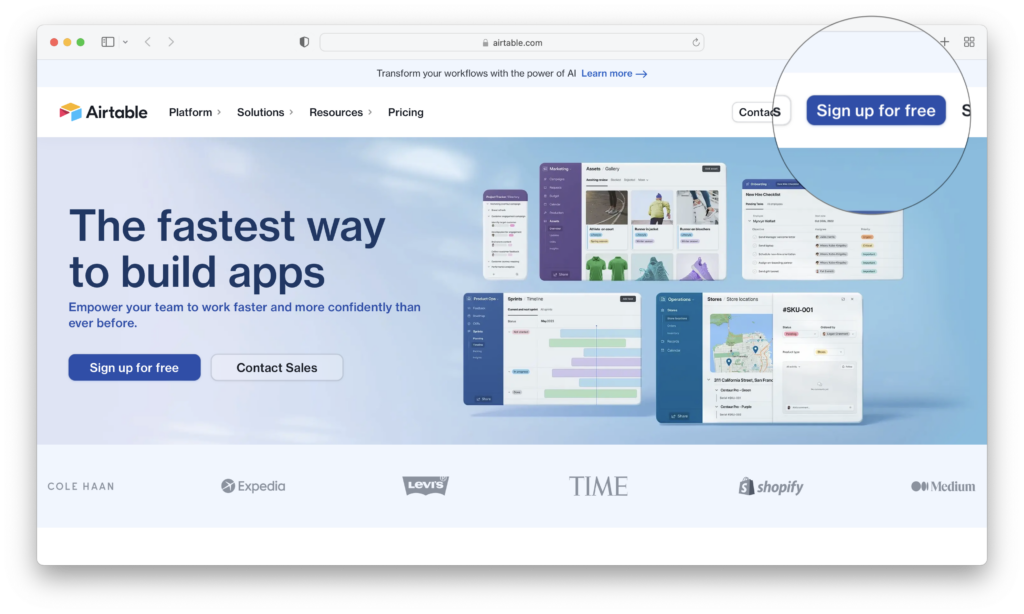
A free trial, as a part of a product-led growth strategy, provides full access to the product for a limited time, after which the user needs to pay to continue using it.
Pros:
- Urgency: The time limitation can push users to engage quickly and deeply with the product.
- Showcasing Full Value: Users get to experience all the features, increasing the chances they’ll see its full value.
Cons:
- Time Pressure: Users might feel rushed and might not get the full experience or understand the complete value of the product.
- Conversion Drop-off: Once the trial ends, there’s a risk users will churn if they’re not convinced of the value.
Freemium
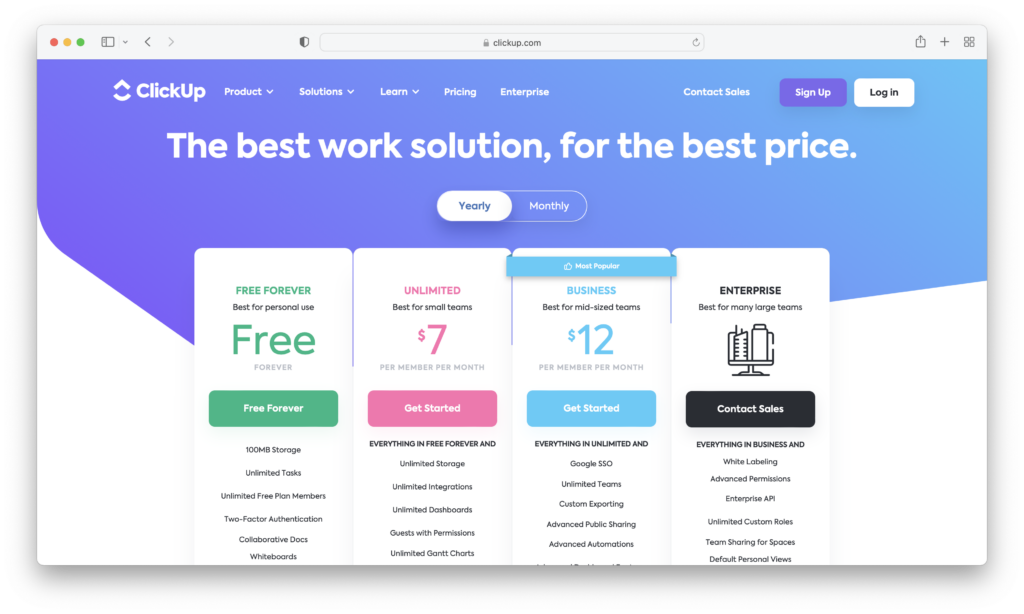
The freemium model offers a basic version of the product for free forever, with more advanced features locked behind a paywall.
Pros:
- Long-term Engagement: Users can take their time to understand the product and might upgrade when they need more advanced features.
- Word-of-mouth: Since there’s no time limit, users are more likely to recommend the product to others.
Cons:
- Potential Revenue Loss: If the free version is too feature-rich, users might never feel the need to upgrade.
- Resource Drain: Supporting free users can strain resources, especially if they’re not converting to paying customers at a sufficient rate.
Which one to choose?
Free Trials work best when the product’s value can be demonstrated quickly, and when it’s targeted at businesses or professionals who can make purchasing decisions swiftly.
Freemiums are effective for products with a broad user base where word-of-mouth can lead to significant growth, and when there’s clear differentiation between basic and advanced features that entices upgrading.
Step 6: Referral Marketing & Giveaways
12- The Power of Referrals
Referrals are just like influencer marketing, but with a higher trust value and a much broader net of people to reach out to.
Make your users refer your product to others. But you can’t just expect them to “refer it if they like it”, you have to take some easy steps:
- Offer Dual Incentives: Reward both the referrer and the referee. It’s like giving a high-five; both parties should feel the love.
- Make it Easy: Integrate referral options naturally into the user experience. A simple “Invite a friend” button or sharing a unique referral link can do wonders.
- Track & Optimize: Use analytics to understand which referral channels (e.g., email, social media) are most effective and optimize accordingly.
- Set Clear Terms: Be transparent about how the program works, what the rewards are, and when they’ll be delivered. No one likes nasty surprises.
- Promote Regularly: Don’t let your users forget about the referral program. Periodically remind them through email campaigns, in-app notifications, or even webinars.
SaaS Marketing Strategy to Boost ROI
So, in the grand scheme of SaaS marketing, think of these strategies as tools in your toolkit. Whether you’re ensuring your website ranks high, getting the word out through affiliates, or getting a nod from the big names in the industry, they all play a pivotal role in getting your software in front of the right eye and boosting those conversions.
Check out our previous articles about B2B SaaS Lead Generation and SaaS Growth Strategies!
Frequently Asked Questions
What is a SaaS marketing strategy?
SaaS marketing strategy is a way to raise awareness for, promote, and sell SaaS products. It aims to provide a value proposition through online channels to nurture recurring revenue model businesses.
What are the 4 P’s of marketing in SaaS?
The 4 P’s in SaaS marketing are Product, Price, Place, and Promotion.
What are the elements of a SaaS marketing strategy?
Key elements of a SaaS marketing strategy include finding and segmenting the target audience, creating a clear value proposition, using content marketing to educate and attract potential users, optimizing for search engines to boost visibility, using email marketing to nurture leads and keep customers, promoting the product on social media, putting in place strategies to lower customer churn and increase their lifetime value, and regularly monitoring.

